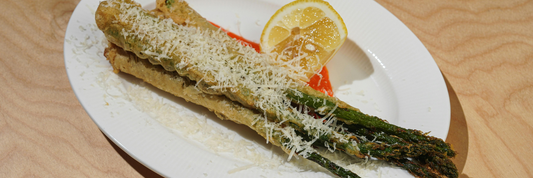When winter arrives, local diners instinctively look for meals that offer warmth, comfort, and deeper flavors. For many F&B businesses especially ramen shops this season presents a unique opportunity. The demand for hot noodle soups can rise significantly as temperatures drop, with comfort food sales increasing by more than 30% in winter months according to recent data from the National Restaurant Association. Customers aren’t just seeking food; they’re seeking warmth, routine, and a little emotional comfort during the cold season.
For restaurants, this creates the perfect moment to craft Ramen Winter Specials that feel thoughtful, seasonal, and genuinely irresistible. And for takeout-heavy businesses, packaging becomes just as important as the recipe itself. This is where Kimecopak plays a valuable role helping restaurants maintain heat, preserve texture, and deliver a premium takeout experience through sustainable, well-engineered packaging solutions.
Below is your full guide to building a winter ramen menu that keeps local customers returning, year after year.
- Sushi Subscription Box: A New Business Model for Restaurants Expanding Takeout Services
- 5 Signs It’s Time to Rebrand Your Ramen Restaurant
Understanding the Winter Customer Mindset

Why Ramen Demand Peaks During Cold Months
Winter changes the way customers choose food. Warm dishes that deliver deep, satisfying flavors naturally rise in popularity. According to DoorDash and Uber Eats seasonal insights, ramen consistently ranks among the top five most-ordered winter dishes, thanks to its rich broth and hearty toppings.
Three factors drive this demand:
-
Comfort-driven cravings: Cold weather makes rich broths and warm noodles irresistible.
-
Higher energy needs: People tend to consume more calories during winter.
-
Seasonal emotional needs: Hot ramen offers a sense of coziness and comfort.
What Local Diners Look for in a Winter Ramen Menu
Your customers aren’t just looking for “a bowl of ramen.” They’re looking for:
-
A richer, more comforting broth
-
Heartier toppings that feel warming
-
Seasonal ingredients that lend freshness and storytelling value
-
Attractive, limited-time items they can only get during winter
Role of Packaging in Winter Takeout Orders
During winter, takeout demand often spikes—especially at lunch and dinner hours. Proper packaging ensures your ramen arrives hot, intact, and enjoyable.
Key attributes customers expect:
-
Heat retention: Double-wall paper soup bowls maintain temperature longer.
-
Leak-proof design: Firm-fitting lids reduce spills during delivery.
-
Eco-friendly materials: More diners prefer sustainable packaging McKinsey reports that 60–70% of consumers are willing to pay more for eco-conscious options.
This is where Kimecopak supports restaurants, offering durable, heat-resistant, eco-friendly packaging tailored for winter ramen dishes.
Choosing the Right Seasonal Ingredients for Your Winter Ramen

Ingredients That Perform Best in Winter
Winter-friendly ramen focuses on strong, comforting flavors. Top-performing ingredients include:
-
Bone broth (tonkotsu, chicken)
-
Miso broth
-
Garlic, ginger
-
Mushrooms
-
Corn
-
Nori
-
Chili oil and sesame paste
These components create hearty, warming bowls customers expect during cold months.
Local & Seasonal Ingredients to Add Freshness and Reduce Costs
Winter presents opportunities to work with local farms:
-
Napa cabbage
-
Leeks
-
Winter mushrooms
-
Sweet potato
-
Daikon radish
Using local ingredients helps control cost volatility while giving your menu a compelling story “farm-to-bowl” resonates strongly with modern consumers.
Boosting Flavor While Maintaining Cost Stability
Cost management is critical for seasonal menus. Restaurants can optimize by:
-
Batch-making broths
-
Cross-utilizing ingredients across menu items
-
Planning early with suppliers to secure stable pricing
Designing Ramen Winter Specials That Stand Out
Signature Broths for the Season
Consider introducing deeper, more indulgent broths such as:
-
Spicy Miso Ramen: A comforting bowl with a kick.
-
Bone Broth Shoyu Ramen: A crowd-pleaser that feels premium.
-
Vegan Mushroom Ramen: Earthy, rich, and winter-perfect.
Winter Toppings That Add Real Value
Great toppings can elevate a bowl immediately:
-
Chashu pork
-
Soft-boiled marinated eggs
-
Seaweed butter
-
Garlic oil
-
Chili paste
-
Roasted corn
These toppings not only improve flavor but also increase the perceived value for winter customers.
Pricing Strategy for Seasonal Menus
Seasonal specials justify higher pricing because they:
-
Use premium ingredients
-
Are limited-time items
-
Offer a unique, winter-exclusive experience
Restaurants can enhance revenue with:
-
Winter ramen combo sets
-
Premium add-ons like extra chashu
-
Upselling warm drinks or sides
Storytelling & Menu Positioning to Attract Local Customers
How to Tell a Winter Ramen Story That Sells
A strong narrative enhances emotional connection:
-
Emphasize warmth and comfort
-
Share inspiration from winter traditions
-
Highlight local ingredients or community stories
Story-rich winter menus convert customers better because they feel personal, thoughtful, and crafted with intention.
Menu Copywriting Techniques
Use words that evoke senses:
-
“Steaming”
-
“Rich and velvety broth”
-
“Warm, slow-simmered comfort”
-
“Winter-inspired toppings”
These descriptions help diners imagine the dish before ordering.
Seasonal Menu Layout Tips
-
Highlight limited-time dishes in a special box
-
Position chef’s recommendations at the top
-
Use icons to show spice levels or vegan options
Operational Tips for Serving Winter Ramen Efficiently
Reduce Prep Time During Peak Hours
-
Prepare toppings in advance
-
Pre-portion noodles
-
Batch-cook broths
Quality Control for Hot Items
-
Serve broth above 75°C
-
Keep noodles al dente
-
Separate broth and noodles for takeout orders
Packaging Solutions to Maintain Heat & Texture
Kimecopak recommends:
-
Heat-resistant paper soup bowls with secure lids
-
Compostable cutlery sets
-
Double-layer bowls for insulation
-
Separate containers for noodles and broth
This ensures your ramen tastes as good at home as it does in store.
Eco-Friendly Packaging for Winter Ramen: Why It Matters
The Rise of Sustainable Takeout in Winter
Consumer expectations shift during winter. According to Forbes, over 70% of consumers prefer eco-friendly packaging, especially for hot and ready-to-eat meals.
Which Packaging Works Best for Hot Ramen?
For winter:
-
Paper soup bowls with PE or PLA lining
-
Double-wall construction to retain heat
-
Vented or PP lids for steam control
Kimecopak Solutions for Winter Takeout
Kimecopak provides premium packaging options including:
-
Heat-resistant paper soup bowls
-
Compostable lids and cutlery
-
Eco-friendly takeout containers
-
Custom-branded packaging
Marketing Your Winter Ramen Specials
Seasonal Promotions That Work
-
“Winter Warm-Up Menu”
-
Limited-time spicy ramen festival
-
Holiday family ramen sets
Local Community Marketing
-
Partner with local cafés or grocery stores
-
Share daily specials in community groups
-
Offer loyalty perks to regulars
Online Marketing Checklist
-
TikTok/IG Reels showing steaming ramen
-
Google My Business winter menu update
-
SEO content targeting “winter ramen near me”
-
Email newsletter with special offers
Sample Ramen Winter Specials Menu (Optional Downloadable)
Provide three templates:
-
Premium artisan winter menu
-
Student-friendly affordable winter sets
-
Takeout-heavy winter ramen menu
Conclusion
A well-designed winter ramen menu not only warms customers during the coldest months, but also builds loyalty, enhances the dining experience, and strengthens your restaurant’s seasonal identity. When paired with sustainable, heat-retaining packaging from Kimecopak, restaurants can deliver consistent quality whether customers dine in or order takeout.
The result?
A winter menu that keeps local diners coming back warm, satisfied, and eager for more.
FAQ
1. What are the most popular ramen flavors during winter?
Spicy miso, tonkotsu, and shoyu are top favorites due to their rich, warming flavors.
2. How can restaurants maintain ramen quality for takeout in winter?
Use double-wall paper bowls, separate noodles from broth, and choose tight-fitting lids to avoid leaks.
3. What ingredients are considered seasonal for winter ramen?
Mushrooms, corn, ginger, daikon, napa cabbage, and winter greens.
4. How long should a winter ramen menu run?
Typically 8–12 weeks, from early December through late February.
5. How can restaurants promote winter ramen specials?
Utilize TikTok/IG Reels, community groups, seasonal bundles, and SEO-targeted blog posts.




